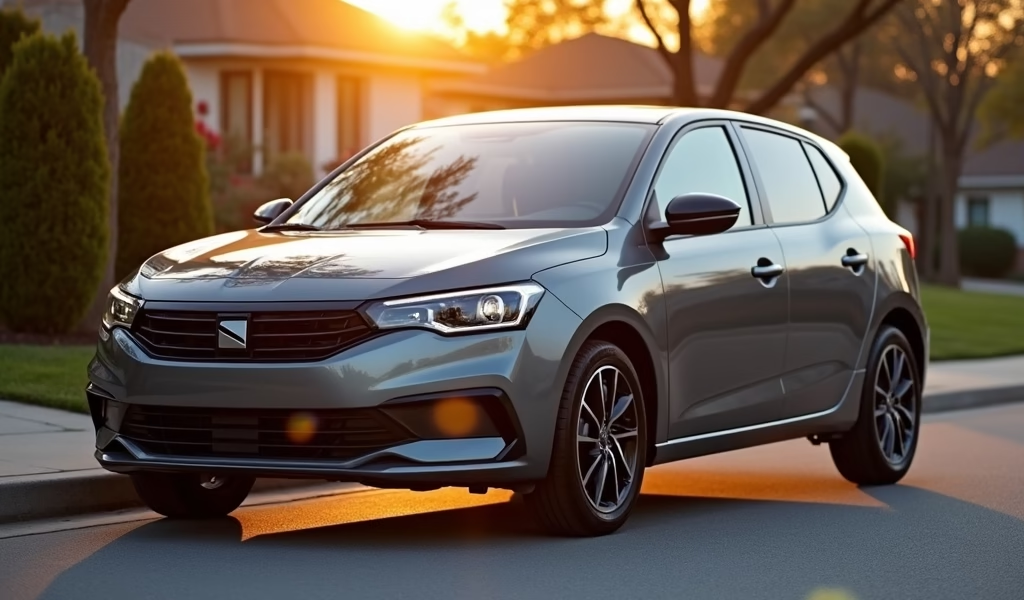Overview
This article provides five essential maintenance tips for new car owners: following manufacturer maintenance schedules, monitoring fluid levels, prioritizing tire care, keeping the vehicle clean inside and out, and using technology to track vehicle health. Proper maintenance from day one helps prevent expensive repairs, maintains warranty coverage, and can help vehicles last beyond 200,000 miles while preserving resale value.
Table of Contents
- Introduction to New Car Maintenance
- Follow the Manufacturer’s Maintenance Schedule
- Monitor and Maintain Proper Fluid Levels
- Prioritize Tire Care
- Keep Your Vehicle Clean Inside and Out
- Use Technology to Your Advantage
- Conclusion
- Frequently Asked Questions
Introduction to New Car Maintenance
That new car smell is something special, isn’t it? A fresh 2021 model sitting in your driveway represents not just a significant investment, but the beginning of a relationship that could last for many years. Like any good relationship, this one needs attention and care right from the start.
Despite all the technological advancements in modern vehicles, proper maintenance remains the single most important factor in determining how long your car will last. According to a comprehensive Consumer Reports study, vehicles that receive regular, scheduled maintenance routinely surpass 200,000 miles – often with far fewer major repairs than neglected vehicles.
I’ve spent over 20 years under the hood, and I can tell you with certainty that how you treat your 2021 vehicle in its first few years sets the stage for its entire life. At our shop, we regularly service 15-year-old cars that run like new because their owners followed these five maintenance tips from day one.
Whether you’ve purchased a practical commuter, a rugged SUV, or even an electric vehicle, these principles apply across the board. Let’s dive into how you can protect your investment and enjoy your new car for years to come.
Follow the Manufacturer’s Maintenance Schedule
That thick owner’s manual sitting in your glove box isn’t just taking up space – it contains your vehicle’s personalized maintenance roadmap. Today’s 2021 models come with highly specific service schedules based on extensive engineering research and real-world testing.
Modern vehicles are incredibly complex machines with dozens of interconnected systems working in harmony. Each manufacturer has carefully determined exactly when each component needs attention. For example, many 2021 models use synthetic oils that can last 7,500-10,000 miles between changes, but skipping these intervals can lead to accelerated engine wear.
Here’s what typically needs attention in the first couple years of ownership:
- Oil and filter changes (intervals vary by model)
- Tire rotations (usually every 5,000-7,500 miles)
- Cabin and engine air filter replacements
- Brake inspections
- Multi-point inspections to catch developing issues
Following this schedule isn’t just about preventing breakdowns – it’s also about preserving your warranty. Most manufacturers’ warranties require documented proof that you’ve maintained the vehicle according to their specifications. One missed oil change could potentially void coverage for a major engine repair.
A real-world example I encountered recently: a customer with a 2021 SUV came in with transmission issues at just 35,000 miles. Upon checking their service history, we discovered they’d skipped the 30,000-mile transmission fluid inspection. The manufacturer denied their warranty claim, resulting in a $4,200 repair that would have been fully covered had they followed the maintenance schedule.
If you’re planning to keep your vehicle long-term, creating a digital or physical folder to store all maintenance records will pay dividends when it comes time to sell. According to research from Kelley Blue Book, vehicles with complete service documentation typically command 10-15% higher resale values.

Monitor and Maintain Proper Fluid Levels
Your 2021 vehicle depends on a variety of specialized fluids to function properly. Think of these fluids as the lifeblood of your car – each serving a specific and crucial purpose. Regularly checking these fluid levels can prevent catastrophic (and expensive) failures.
Engine oil is perhaps the most critical fluid. It lubricates moving parts, reduces friction, helps cool the engine, and carries away contaminants. Modern synthetic oils used in 2021 models can withstand higher temperatures and last longer than conventional oils, but they still need regular changing.
In my experience, nothing destroys engines faster than neglected oil. I recently worked on a 2021 sedan that had gone 15,000 miles without an oil change (despite the manufacturer’s 7,500-mile recommendation). The sludge buildup had already caused measurable damage to the engine bearings – a condition that will likely reduce the engine’s lifespan by 30-40%.
Beyond oil, these fluids also require regular attention:
- Coolant/antifreeze: Prevents freezing in winter, overheating in summer, and contains additives that prevent corrosion
- Brake fluid: Hygroscopic (absorbs water from the air), which means it needs replacement every 2-3 years regardless of mileage
- Transmission fluid: Essential for smooth shifting and transmission longevity
- Power steering fluid: Provides the hydraulic pressure needed for easy steering (if your vehicle uses hydraulic rather than electric power steering)
- Windshield washer fluid: Simple but crucial for visibility and safety
A study by the Car Care Council found that 38% of vehicles have at least one fluid that’s either low or contaminated enough to require immediate attention. For a 2021 vehicle, maintaining proper fluid levels is especially important since many modern engines run at higher temperatures and tighter tolerances than older models.
The good news? Most 2021 vehicles make fluid checks easier with clearly marked dipsticks and reservoirs. Many even have electronic monitoring systems that alert you when fluid levels drop or service is needed. Spending five minutes checking fluids monthly can save thousands in repair costs.
Prioritize Tire Care
Your tires are literally where the rubber meets the road – the only points of contact between your vehicle and the pavement. Proper tire maintenance affects everything from fuel economy and handling to safety and ride comfort.
The most important aspect of tire care is maintaining proper inflation pressure. According to research from the National Highway Traffic Safety Administration, underinflated tires can reduce fuel economy by up to 0.3% for every 1 PSI drop below the recommended pressure. That means even being 5 PSI low could cost you 1.5% in fuel efficiency – money literally evaporating from your tank.
For your 2021 vehicle, the correct tire pressure isn’t what’s listed on the tire sidewall (that’s the maximum pressure the tire can hold). Instead, look for a sticker inside your driver’s door jamb or in your owner’s manual for the manufacturer’s recommended pressures.
I recommend checking tire pressure monthly and before any long trips. Temperature changes significantly affect pressure – for every 10°F change in ambient temperature, tire pressure changes by about 1 PSI. This means seasonal adjustments are necessary in many climates.
Rotation is another critical aspect of tire maintenance. Modern vehicles, especially front-wheel drive models, place different stresses on front and rear tires. Without regular rotation (typically every 5,000-7,500 miles), you’ll likely wear out your front tires long before the rears. A proper rotation schedule can extend tire life by 20% or more.
I recently worked with a customer whose 2021 crossover showed significant front tire wear at just 15,000 miles. They had skipped their rotation service, resulting in the need to replace the front tires at nearly $200 each. Had they followed the rotation schedule, those tires would likely have lasted beyond 40,000 miles.
Finally, don’t forget regular alignment checks. If you notice your vehicle pulling to one side or uneven tire wear, it’s time for an alignment service. Many 2021 vehicles have sophisticated suspension systems that can be knocked out of alignment by something as simple as hitting a pothole. Proper alignment not only extends tire life but also improves handling and safety.
For those living in areas with serious winter weather, consider investing in dedicated winter tires. Modern all-season tires compromise performance in extreme conditions, while winter tires provide dramatically improved traction on snow and ice – sometimes reducing stopping distances by 30% or more compared to all-seasons.
Keep Your Vehicle Clean Inside and Out
Vehicle cleanliness isn’t just about appearances – it’s a legitimate maintenance concern. Regular cleaning prevents premature wear and preserves your 2021 vehicle’s value. Let me explain why this matters from a mechanical perspective.
The exterior finish on your new car isn’t just for looks. Modern automotive paint systems create a protective barrier that shields the metal underneath from oxidation and rust. Environmental contaminants like bird droppings, tree sap, road salt, and even acid rain can damage this protective layer if left untreated.
I recommend washing your vehicle at least twice monthly – more frequently if you live in areas with harsh conditions. A study from the International Carwash Association found that regular washing can extend a vehicle’s finish life by several years. For 2021 models with modern clear coat finishes, this preservation is especially important.
Waxing your vehicle 3-4 times yearly provides an additional layer of protection. Modern synthetic waxes and ceramic coatings create a sacrificial barrier that takes the abuse instead of your paint. This not only preserves appearance but also prevents costly repainting down the road.
Don’t neglect your vehicle’s undercarriage. Road salt and brine solutions used for winter ice control are incredibly corrosive to metal components. According to research from the American Chemical Society, vehicles in regions that use road salt develop structural rust issues nearly twice as quickly as those in salt-free regions. Most automatic car washes offer undercarriage spray options – well worth the extra few dollars during winter months.
Interior cleaning is equally important. Modern automotive interiors use synthetic materials that can degrade when exposed to UV light, body oils, and spilled substances. Regular cleaning and conditioning of these surfaces prevents cracking, discoloration, and premature wear.
Beyond aesthetics, a clean interior contributes to proper function of controls and electronics. The advanced touchscreens and buttons in 2021 models work best when free of oils and debris. I’ve seen numerous cases where “malfunctioning” controls were simply suffering from built-up grime affecting their operation.
A specific example I encountered recently: a customer complained about their climate control system not working properly in their 2021 sedan. The issue? Dust accumulation in the cabin air filter had restricted airflow so severely that the system couldn’t function efficiently. This $15 filter replacement restored proper operation and prevented what could have become a much more expensive repair to the blower motor.
Finally, don’t overlook your engine bay. While you don’t need to detail it weekly, a yearly cleaning helps you spot developing issues like fluid leaks, cracked hoses, or loose connections before they become serious problems.

Use Technology to Your Advantage
Your 2021 vehicle comes equipped with technology that previous generations of car owners could only dream about. These advanced systems can significantly improve your maintenance experience when used properly.
Most 2021 models feature sophisticated onboard diagnostic systems that constantly monitor vehicle health. The days of guessing when service is needed are largely behind us. Your vehicle likely has an oil life monitoring system that analyzes driving conditions, temperature cycles, and engine parameters to determine precisely when an oil change is needed.
According to research published in the SAE International Journal, these oil life monitoring systems have been shown to safely extend oil change intervals by an average of 30% compared to traditional mileage-based schedules. This saves money and reduces environmental impact without compromising engine protection.
Take advantage of manufacturer smartphone apps that connect to your vehicle. Many 2021 models offer apps that can:
- Alert you to maintenance needs before they become problems
- Monitor tire pressure and other vital systems remotely
- Track fuel economy to spot efficiency problems
- Store digital service records
- Schedule service appointments directly from your phone
I recently worked with a customer whose 2021 SUV sent them a smartphone notification about low tire pressure before it became visually apparent. This early warning allowed them to add air before any damage occurred and potentially prevented a blowout situation on their family road trip.
If your vehicle offers telematics services (like OnStar, Lexus Enform, or BMW ConnectedDrive), consider maintaining the subscription. These systems can provide valuable diagnostic information and even alert you to developing problems before they cause breakdowns. Some can automatically schedule service when maintenance is needed.
For the tech-savvy, consider investing in an OBD-II scanner that connects to your smartphone. These affordable devices (typically $30-100) allow you to read trouble codes yourself, potentially saving diagnostic fees and helping you make more informed decisions about when service is truly necessary. For your 2021 vehicle, look for scanners that support enhanced manufacturer-specific codes for more detailed information.
Finally, use technology to track and document your vehicle’s maintenance history. Whether through a dedicated app, spreadsheet, or simply taking photos of service receipts, having a complete digital record makes warranty claims easier and significantly increases resale value. When selling, buyers are far more likely to pay premium prices for vehicles with documented care.
As someone who’s spent decades in repair shops, I can tell you that buying a car online or in person is just the beginning – maintaining it properly with the help of modern technology makes all the difference in ownership experience and long-term costs.
Conclusion
Taking proper care of your 2021 vehicle isn’t just about preserving a machine – it’s about protecting your investment, ensuring safety, and enjoying trouble-free driving for years to come. The maintenance decisions you make in the first year or two of ownership will set the trajectory for your vehicle’s entire lifespan.
By following the manufacturer’s maintenance schedule, monitoring fluid levels, prioritizing tire care, keeping your vehicle clean, and leveraging available technology, you’re setting yourself up for thousands of miles of reliable service. These habits might seem simple, but they make a profound difference in how your vehicle performs over time.
Remember that preventive maintenance is almost always less expensive than repairs. The small investments you make now in proper care will pay dividends through reduced operating costs, fewer breakdowns, and stronger resale value when it’s time for your next vehicle.
Your 2021 model represents the culmination of decades of automotive engineering advancement. With the right care, it has the potential to be the most reliable, long-lasting vehicle you’ve ever owned. From one car enthusiast to another – give it the attention it deserves, and it will reward you with years of faithful service.
Frequently Asked Questions
How often should I change the oil in my 2021 vehicle?
Follow your vehicle’s oil life monitoring system or owner’s manual recommendation, typically between 5,000-10,000 miles for most 2021 models. Modern synthetic oils can safely last longer than conventional oils used in older vehicles.
Do I need to follow the break-in period recommendations for my new 2021 car?
Yes, following the manufacturer’s break-in recommendations helps ensure proper seating of engine components and optimal long-term performance. These typically include avoiding hard acceleration and maintaining varying speeds for the first 500-1,000 miles.
Can I use regular gas in my 2021 vehicle if premium is recommended?
If premium fuel is recommended but not required, you can use regular fuel with a possible slight reduction in performance and efficiency. If premium is required, using regular can cause engine knock and potential damage.
How often should I rotate the tires on my 2021 car?
Most manufacturers recommend tire rotation every 5,000-7,500 miles to ensure even wear. Following this schedule can extend tire life by 20% or more compared to never rotating.
Will aftermarket parts void my 2021 vehicle’s warranty?
Under the Magnuson-Moss Warranty Act, aftermarket parts alone cannot void your warranty unless the manufacturer can prove they caused the problem. However, modifications that alter vehicle systems significantly may affect warranty coverage for related components.

